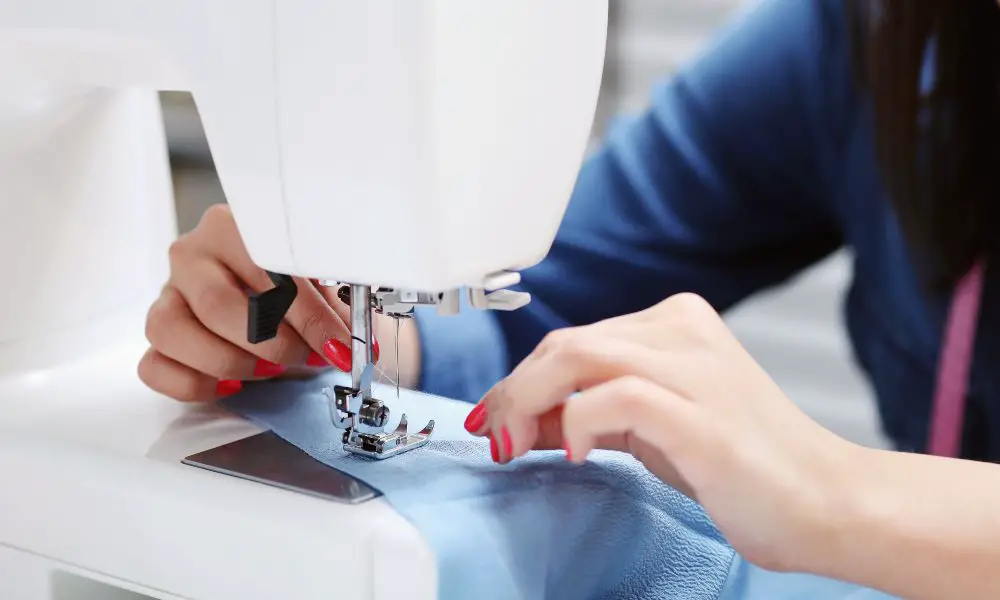Have you ever found yourself amid a sewing project, only thwarted by a tangled thread or a skipped stitch? If so, you’re not alone. Rethreading a sewing machine can be daunting, but it’s a crucial skill every sewist or fashion designer must master. Imagine the frustration of meticulously following a sewing pattern and having your hard work unravel due to improper threading. Fear not, for we’ve embarked on a comprehensive odyssey to demystify the art of rethreading your sewing machine, ensuring your projects are executed seamlessly.
Unveiling the Enigma: Why Rethreading is Crucial
Ensuring Seamless Stitches
Proper threading is the foundation of flawless sewing. A correctly threaded sewing machine ensures that the needle and bobbin threads interlock harmoniously, creating uniform, secure stitches. Neglecting to rethread your machine can lead to unsightly skipped stitches, puckered seams, or even a complete unraveling of your hard work.
Preventing Tangled Turmoil
Have you ever experienced the frustration of a tangled thread, causing your sewing machine to seize up mid-project? This vexing issue often stems from improper threading. Regularly rethreading your machine prevents these tangled knots from forming, ensuring your sewing sessions are productive and stress-free.
Preparatory Procedures: Assembling the Essentials
Before embarking on the rethreading journey, gathering the necessary materials and preparing your sewing machine for the task is essential.
Procuring the Perfect Thread
Selecting the appropriate thread is crucial for achieving professional-quality results. Consider the type of fabric you’ll be working with and choose a thread that complements it. Cotton thread is a versatile choice for most fabrics, while specialized threads like polyester or silk offer unique benefits for specific sewing projects.
Bobbin Basics: Winding the Foundation
The bobbin is the foundation upon which your stitches are built. Proper bobbin winding is essential for ensuring even tension and preventing thread breakage. It is vital to refer to your sewing machine manual for precise guidance on correctly winding the bobbin. It’s worth noting that the techniques may differ across various brands of sewing machines.
The Art of Rethreading: A Step-by-Step Odyssey

Now that you’ve assembled your materials, it’s time to embark on the rethreading odyssey. Follow these steps meticulously to ensure a smooth transition.
Unraveling the Upper Thread
- Begin by raising the presser foot and needle to their highest positions.
- Locate the spool pin and place the thread spool onto it, ensuring it unwinds smoothly.
- Carefully guide the thread through the thread guide, following the designated thread path on your sewing machine.
- If your machine features an automatic needle threader, utilize this ingenious tool to thread the needle eye effortlessly.
Mastering the Bobbin Insertion
- Remove the bobbin cover and locate the bobbin compartment.
- Place the wound bobbin into the compartment, ensuring it aligns with the bobbin pin.
- Pull the bobbin thread through the designated slot, leaving a short tail protruding.
Aligning the Tension: The Equilibrium Enigma
Achieving the perfect tension balance is the holy grail of sewing. Make sure to refer to your sewing machine’s manual to learn about the suggested tension settings best suited for the combination of fabric and thread you are using. Adjust the tension discs accordingly, ensuring the upper and bobbin threads interlock seamlessly.
Troubleshooting Trials: Combating Common Conundrums
Even with meticulous care, rethreading hiccups can occur. Fear not, for we’ve compiled a few troubleshooting tips to help you navigate these challenges.
Tangled Threads: A Knotty Affair
If you encounter tangled threads, resist the urge to pull forcefully, which may exacerbate the situation. Instead, gently unravel the knot, rethread your machine, and double-check the thread path for any potential snags or obstructions.
Skipped Stitches: Deciphering the Dilemma
Skipped stitches can be frustrating, but improper threading, a dull needle, or incorrect tension settings often cause them. Rethread your machine, replace the needle if necessary, and adjust the tension according to your sewing machine manual.
Brand-Specific Nuances: Tailoring the Process
While the fundamental principles of rethreading remain consistent across sewing machine brands, specific nuances may exist. Let’s explore a few popular brands and their unique quirks.
Singer: The Melodious Maven
Singer sewing machines are renowned for their user-friendly designs and intuitive threading systems. Many models feature color-coded guides and automatic needle threaders, making rethreading a breeze.
Juki: The Precision Powerhouse
Juki sewing machines are revered for their industrial-grade durability and precision. When rethreading a Juki machine, pay close attention to the intricate thread path, as these machines often feature additional tension discs and guides to ensure flawless stitching.
FAQs:
How often should I rethread my sewing machine?
Rethreading your sewing machine before starting a new project or when you encounter issues such as skipped stitches or thread breakage is recommended. Regular rethreading helps prevent potential problems and ensures consistent stitch quality.
Can I use any type of thread for my sewing machine?
While most sewing machines can accommodate various thread types, it’s best to consult your machine’s manual for specific recommendations. Different threads have varying strengths and properties, so choosing the appropriate thread for your fabric and project is essential.
What should I do if my needle keeps unthreading during sewing?
If your needle keeps unthreading, check for potential issues such as a damaged eye, incorrect threading, or improper tension settings. Sometimes, simply rethreading the machine or replacing the needle can resolve the problem.
Can rethreading a sewing machine be done with the loaded bobbin?
It’s possible to rethread the upper thread while the bobbin is already loaded in the bobbin compartment. However, removing the bobbin case for easier access and to ensure proper bobbin thread alignment is generally recommended.
Conclusion: Embracing the Rhythmic Hum of Rethreaded Perfection
Rethreading your sewing machine may seem daunting, but with patience, practice, and guidance in this comprehensive guide, you’ll soon embrace the rhythmic hum of rethreaded perfection. Remember, proper threading is the foundation of every successful sewing project, ensuring your creations are executed with precision and finesse.
Have you encountered any unique challenges while rethreading your sewing machine, or do you have any tips to share with fellow creators? We’d love to hear your thoughts and experiences in the comments below!
***
Main image: freepik




